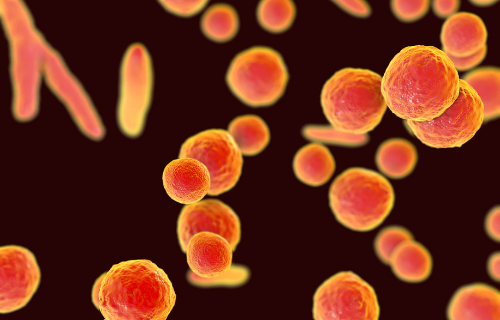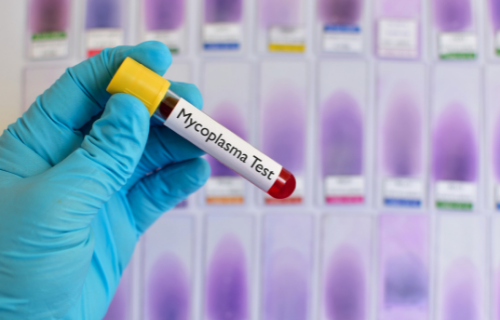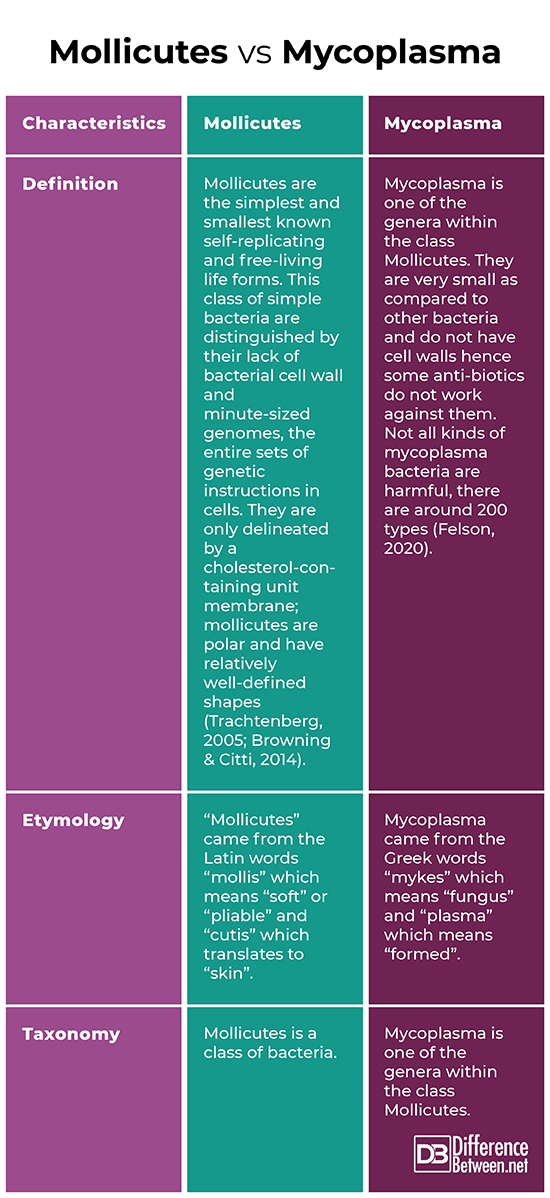Difference Between Mollicutes and Mycoplasma
Both mollicutes and mycoplasma are bacteria without cell walls and have been used interchangeably. Specifically, mycoplasma is the best-known genus in the mollicutes. Their distinctions are discussed below.

What are Mollicutes?
Mollicutes are the simplest and smallest known self-replicating and free-living life forms. “Mollicutes” came from the Latin words “mollis” which means “soft” or “pliable” and “cutis” which translates to “skin”. This class of simple bacteria are distinguished by their lack of bacterial cell wall and minute-sized genomes, the entire sets of genetic instructions in cells. They are only delineated by a cholesterol-containing unit membrane; mollicutes are polar and have relatively well-defined shapes (Trachtenberg, 2005; Browning & Citti, 2014). Since they are filterable with many kinds of viruses, many mollicutes were earlier mistaken for viruses (Tully, 1993).
The three genera of Class Mollicutes that can cause diseases in humans are (Berman, 2012):
Erysipelothrix
It causes localized cutaneous infection, diffuse cutaneous infection, and systemic infection (Wang & Riley, 2015).
Mycoplasma
The most common diseases associated with mycoplasma include tracheobronchitis and sexually transmitted infections (Centers for Disease Control and Prevention, 2020; Martin, 2015)
Ureaplasma
They are the most prevalent genital Mycoplasma isolated from both male and females’ urogenital tract. Ureaplasma is associated with genital tract infections, infertility, adverse pregnancy outcomes, and newborn diseases (Kokkayil & Dhawan, 2015).

What are Mycoplasma?
Mycoplasma came from the Greek words “mykes” which means “fungus” and “plasma” which means “formed”. This term was first used in 1989 by Albert Bernhard Frank who described the changed condition of plant cell cytoplasm due to the penetration of fungus-like microorganisms (Krass & Gardner, 1973).
Mycoplasma is one of the genera within the class Mollicutes. They are bacteria that can infect the lungs, skin, or urinary tract. They are very small as compared to other bacteria and do not have cell walls; hence, some anti-biotics do not work against them. Not all kinds of mycoplasma bacteria are harmful, there are around 200 types. Those which can cause diseases include (Felson, 2020):
Mycoplasma pneumoniae
These may cause lung infections such as “walking pneumonia” (a mild form of pneumonia).
Mycoplasma genitalium
These are sexually transmitted; however, some people do not exhibit symptoms. A woman who experiences symptoms may feel pain during sex, have vaginal bleeding after sex, and have vaginal discharge. A man who has mycoplasma genitalium infection may experience urethritis, a burning sensation when urinating, and discharge from the penis.
Mycoplasma hominis
These bacteria can be found in the genitals and urinary tract of about half of all females and fewer males. Fortunately, they rarely cause infections among healthy individuals. Among women, mycoplasma hominis may be related to pelvic inflammatory disease and pregnancy complications.
Ureaplasma urealyticum and Ureaplasma parvum
These bacteria are sexually transmitted but they rarely cause infections and typically live in the vagina or cervix of women, they may also be found in the urethra of some men. Women who get infected may experience belly pain, swelling of the opening of the urethra, urethral discharge, and painful urination. Men who get infected may experience urethritis.
Difference between Mollicutes and Mycoplasma
Definition
Mollicutes are the simplest and smallest known self-replicating and free-living life forms. This class of simple bacteria are distinguished by their lack of bacterial cell wall and minute-sized genomes, the entire sets of genetic instructions in cells. They are only delineated by a cholesterol-containing unit membrane; mollicutes are polar and have relatively well-defined shapes (Trachtenberg, 2005; Browning & Citti, 2014). In comparison, mycoplasma is one of the genera within the class Mollicutes. They are very small as compared to other bacteria and do not have cell walls; hence, some anti-biotics do not work against them. Not all kinds of mycoplasma bacteria are harmful, there are around 200 types (Felson, 2020).
Etymology
“Mollicutes” came from the Latin words “mollis” which means “soft” or “pliable” and “cutis” which translates to “skin”. On the other hand, mycoplasma came from the Greek words “mykes” which means “fungus” and “plasma” which means “formed”. This term was first used in 1989 by Albert Bernhard Frank who described the changed condition of plant cell cytoplasm due to the penetration of fungus-like microorganisms (Krass & Gardner, 1973).
Taxonomy
Mollicutes is a class of bacteria; mycoplasma is one of the genera within the class Mollicutes.
Mollicutes vs Mycoplasma

Frequently Asked Questions:
How are Mollicutes different from other bacteria?
This class of simple bacteria are distinguished by their lack of bacterial cell wall and minute-sized genomes.
What are the diseases caused by Mollicutes?
The diseases that can be caused by mollicutes include cutaneous infection, diffuse cutaneous infection, and systemic infection (Wang & Riley, 2015); tracheobronchitis and sexually transmitted infections (Centers for Disease Control and Prevention, 2020; Martin, 2015; genital tract infections, and newborn diseases (Kokkayil & Dhawan, 2015).
Is mycoplasma a Firmicute?
Mollicutes form one clade within the phylum Firmicutes (Hogenhout, 2009).
Are Mollicutes Gram positive or negative?
Mollicutes are of gram-positive origin; this is evidenced by their 16S rNA (Trachtenberg, 2005).
Summary
- Mollicutes are the simplest and smallest known self-replicating and free-living life forms.
- Mycoplasma are very small as compared to other bacteria and do not have cell walls; hence, some anti-biotics do not work against them
- Mycoplasma is one of the genera within the class Mollicutes.
- Difference Between Hematoma and Melanoma - February 9, 2023
- Difference Between Bruising and Necrosis - February 8, 2023
- Difference Between Brain Hematoma and Brain Hemorrhage - February 8, 2023
Search DifferenceBetween.net :
Leave a Response
References :
[0]Browning, G., & Citti, C. (2014). Mollicutes: Molecular biology and pathogenesis. Caister Academic Press.
[1]Felson, S. (2020). Mycoplasma infections. Web MD. https://www.webmd.com/a-to-z-guides/mycoplasma-infections
[2]Krass, C.J. & Gardner, M.W. (1973). "Etymology of the Term Mycoplasma". Int. J. Syst. Evol. Microbiol. 23 (1): 62–64. doi:10.1099/00207713-23-1-62.
[3]Kokkayil, P., & Dhawan, B. (2015). Ureaplasma: Current perspectives. https://pubmed.ncbi.nlm.nih.gov/25865969/
[4]Martin, D. (2015). Genital mycoplasmas. Mandell, Douglas, and Bennett’s principles and practice of infectious diseases. Elsevier Inc.
[5]Trachtenberg, S. (2005). Mollicutes. Current Biology.
[6]Tully J.G. (1993) Biology of Mollicutes. In: Rapid Diagnosis of Mycoplasmas. Federation of European Microbilogical Societies Symposium Series, vol 62. Springer, Boston, MA. https://doi.org/10.1007/978-1-4615-2478-6_2
